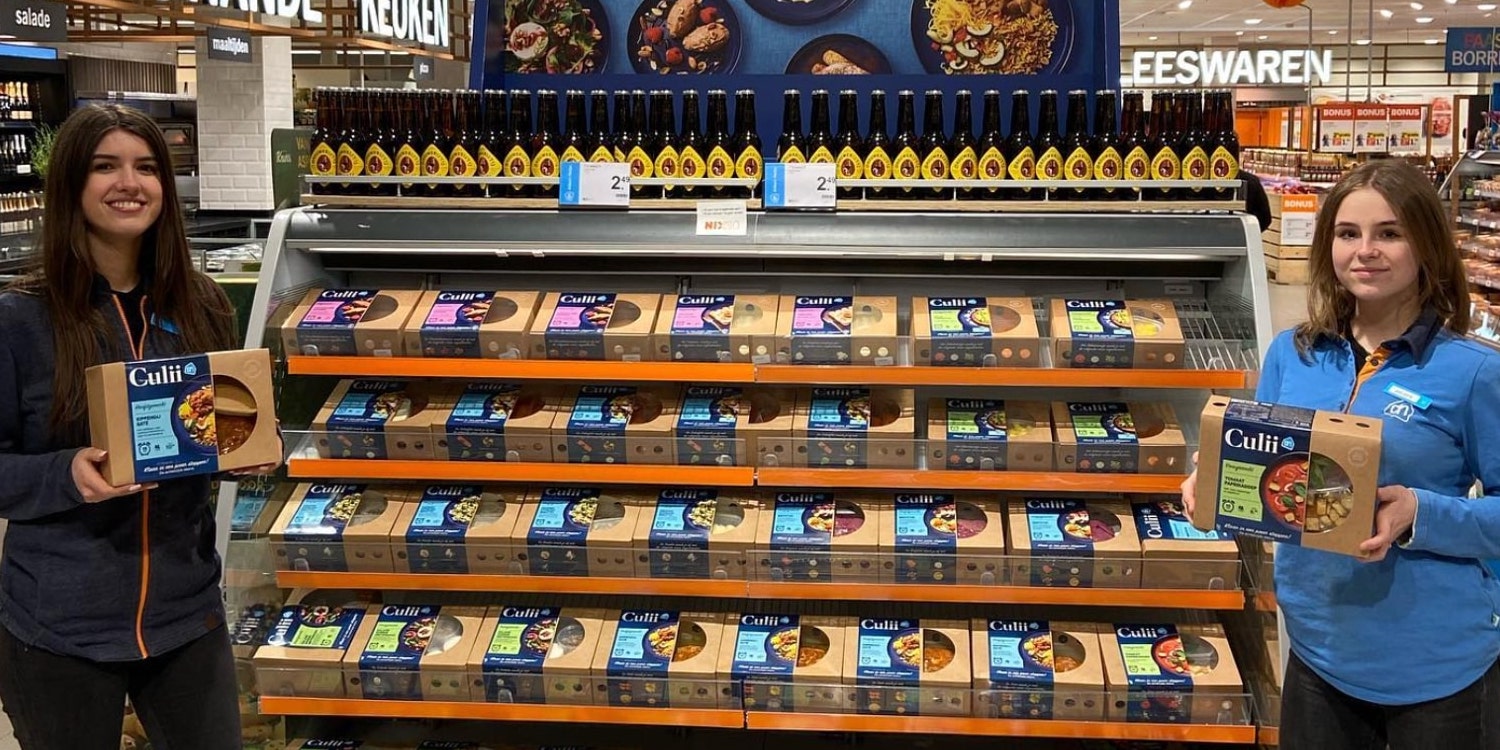Sparring about your Lean issue?
Call René
When it needed to develop a new production process for a new product, this Dutch company used Lean tools and practices. And the results were impressive.
Words: Frank van Velzen, Trainer and Senior Advisor, Lean Management Institute
Introducing a new product into your production schedule can be a difficult undertaking. Especially when the product is complex and there is not yet a production line or process in place that is suitable for manufacturing the new product. This was the situation Vezet recently found itself in. Koninklijke Vezet is a 108-year-old family-owned company specializing in food products in the Netherlands. One of its customers, supermarket chain Albert Heijn, wanted to introduce a new product called Culii. Culii is a make-it-yourself meal box with the ingredients for a starter, main or dessert that can be prepared in 10 minutes and can be eaten by two people.
Because of the large number of ingredients in the box, Culii was the most complex product Vezet has had to put together to date. Vezet decided to set up production of Culii at a small factory in Purmerend, one of a total of seven factories with 72 production lines in the Netherlands. The Purmerend plant was chosen because of the team's expertise and the machinery available there. Nevertheless, the challenge was great: with Culii, the expected production volume of the Purmerend plant would grow by 250%, and with that there was the goal of doing this without additional investment (in machinery or more factory space).
The starting point for this completely redesigned production process was to do so according to the ideas of Lean . Vezet therefore asked the Lean Management Institute for help. Vezet had already been working with us for two and a half years.
The plan from the beginning was to produce the meal boxes on one assembly line and supply them with components (ingredients) from three sub-assembly lines. From each Culii box there are multiple choices of starters (4 types), main courses (4 types) and desserts (2 types) types that can be combined in different ways. On top of this, the large number of ingredients and variety of these made the already complicated assembly process no easier. All these variations could easily lead to long changeover times, making it costly to work with small batches and the little space available.
The team's first step was to categorize all ingredients and their preparations by complexity. This resulted in a division into three levels: easy (such as a pre-packaged cheese bar that can simply be placed in the Culii box, medium (such as any product that needs to be weighed) and difficult (products that need to be cooked).
Once a common understanding of the complexity was created, ways were sought to reduce the complexity while distributing the work evenly across the lines. This would make the process more manageable and predictable. The aim was to keep the level of complexity the same at different places in the line. To optimize the process, the ECRS method, Eliminate-Combine-Rearrange-Simplify, was used and a start was made to define the amount of resources in terms of personnel, machines and square meters that would be needed. A branch time for the overall production process was established, and it was determined that a Culii box should come off the line every 8.4 seconds and a pallet filled every 30minutes.
The team's goal was to make the best use of every square foot in the plant, which is precisely one of Lean 's strengths. To make this possible, the biggest change made was to move from batch-and-queue to small batches where work was done in flow. Before setting up this Lean experiment, production took place in three steps with a three-day lead time, which naturally led to a lot of unfinished work and large inventories. With the introduction of Culii, this was no longer an option, as the team needed the space to produce the large volumes demanded by the customer.
With flow as the end goal, the team moved to small batches and began producing on the same day (i.e., no longer three days in advance) and they started several times a day. The process produced the Culii boxes and prepared them for delivery, organizing the work into 45-minute time blocks (of which there were eight each day), each time feeding small amounts of raw materials and ingredients to the line. During those 45 minutes, each area involved in the process did its part (for example, preparing chicken) and fed its output to the main line for assembly. What made this run smoothly was the introduction of Job Instruction Sheets - which enabled standardization - and the reorganization of tools and raw materials to ensure they would be available to workers when they needed them, in the right quantity and at the right time.
To develop the new system, the work as a whole was broken down and thoroughly analyzed(with the book Kaizen Express being of great help due to its detailed instructions). The parts list was studied to understand what each order entailed in terms of square footage, raw materials used and ingredients how many people were needed to process the order. In this way, each team learned exactly what needed to be done to achieve the output and each part of the team what they needed to contribute to the production line and what they needed to get it done. Getting people to work together, with support from team and shift leaders and business unit managers is what ultimately made the difference. The layout of the plant was also changed, using spaghetti diagrams to understand how workers moved through the plant and minimize their movements.
All this work was done in preparation for a test in which the capabilities of the system, involving a total of five people, would be tested against the three-complexity scenarios. The team wanted to know if so could deliver orders with the branch time they had set and how many people they would need to do so. The plan for the test was laid out, but as usual, theory and reality are often quite different. So after the first test (and the others that followed), adjustments were made based on the team's observations and lessons learned. This is the kind of iterative approach that makes Lean so powerful for change.
When the pilot project began, Vezet supplied the Culii boxes to only a few Albert Heijn supermarkets, producing 2,500 boxes per day. Two weeks later, the client supermarkets announced they would need 20,000 boxes per day throughout Easter week.
The team thought it wouldn't be possible, but in the end Vezet was able to deliver the volumes requested by the customer every day - both during the Easter peak and on regular days. This was Vezet's first product launch with no disruptions. This demonstrates the stability of the process the team designed with Lean Management Institute. The KPI that, perhaps more than any other, proves the solidity of the new process is the number of items each worker makes in one hour: it was 15 at the beginning of the project and there are now 36 (expected to be 40 per hour by the end of the year).
The most important result, however, is that Vezet is now making full use of the knowledge contained within its employees. The lessons learned by the team are now used in every new product introduction within the company, making them better prepared for future situations.
The author


Sign up for our newsletter